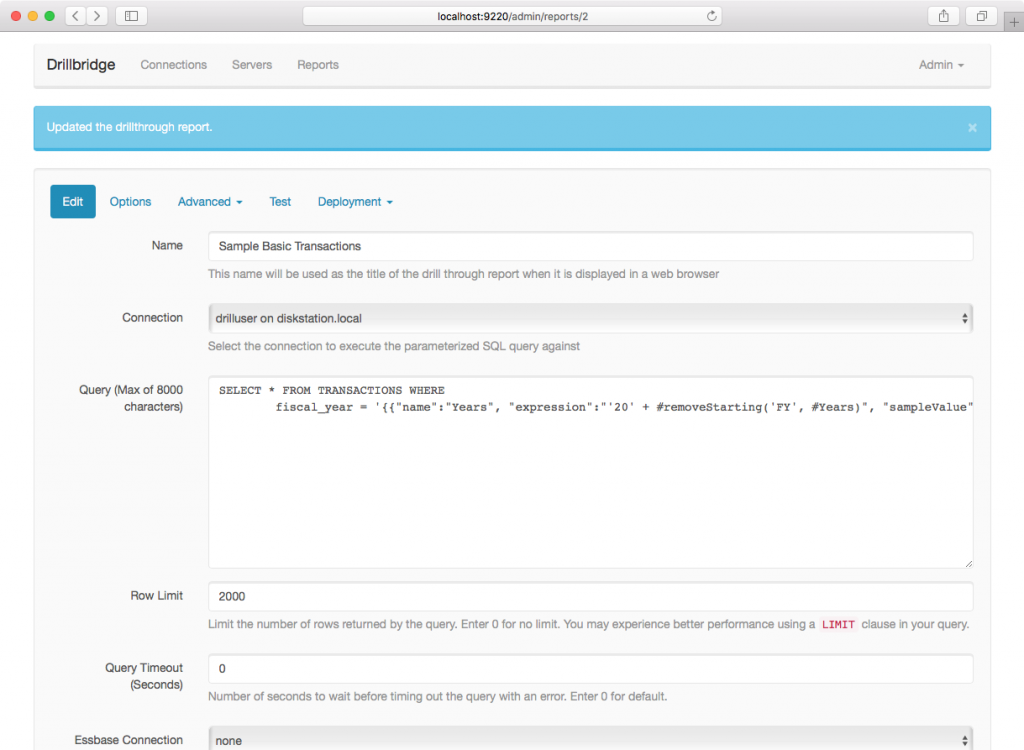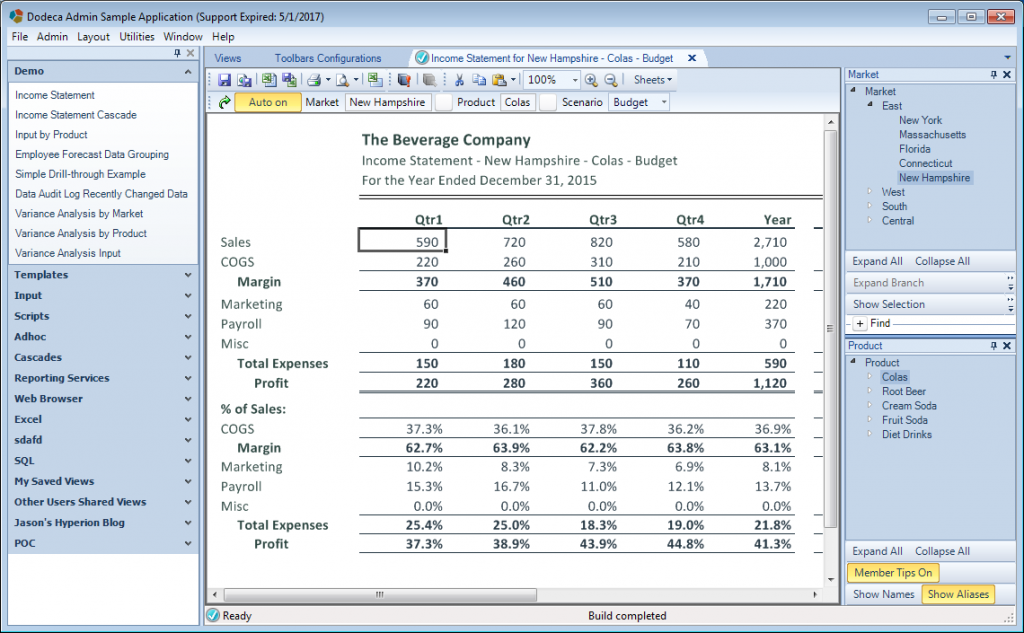Today I’d like to continue on the theme of new functionality in the latest release of Dodeca, version 7.3 that came out some time ago. I talked about the new Outline Viewer functionality and MDX enhancements already, today I wanted to give a brief overview of some of the new functionality in Workbook Scripts (WBS).
If you’re not familiar, Workbook Scripts are optional scripts that can be added to views that provide advanced functionality inside of views. You can think of it as a modern, more maintainable analog to VBA, optimized to work in a world of Essbase-based data on spreadsheets. Dodeca 7.3 included some new methods and functions. There’s also updated Dodeca 7.3 WBS documentation available on the web.
New & Updated Procedures
CopyFromBinaryArtifact
The new CopyFromBinaryArtifact method is potentially the most interesting new method to show up. There are overloads for copying a whole sheet or copying a range from a particular binary artifact (i.e. a completely separate Excel sheet than the current view). So this potentially allows organizations to centralize some information, formatting, data, or other stuff into a central sheet, then refer to it. I could see people using this to store small amounts of data that they want to reuse in a view (thereby obviating the need to put the data in a bespoke relational table/cube), or copying some common formatting elements into a new view. So, this new method potentially opens up some significant maintenance savings and other possibilities in a lot of cases
OpenApplication
OpenApplication can be used to launch a different application instance from the current one. This can be useful for user convenience, where instead of telling the user that they need to go to a separate app, you can launch it for them.
SaveWorkbookAsCsv
The SaveWorkbookAsCsv method is pretty much what it sounds like. In addition to being able to save the workbook as a CSV file using the UI, you can perform this via WBS. I see Dodeca used in many cases providing some quasi-ETL functionality, or being used for large data dumps, so this could be handy. For example, maybe you want to allow users to drill into relational data and then automatically download it to their desktop.
AddDataCache: EssbaseMDXScript
There’s a new EssbaseMDXScript overload available as part of AddDataCache. The Data Cache functionality is really handy in many instances, especially where you want to execute an “expensive” (in terms of query time) query but then be able to do multiple things with the data without having to re-run the query. Now you can cache data based on an MDX query in addition to the normal options with report scripts, SQL, and more.
SendEmail (new Zip options)
SendEmail gained a couple of new properties to zip attachments. This method is already used quite heavily to have Dodeca generate and email large, complex books of reports (Excel and PDF) and mail them around. This is quite frequently used as part of batch reporting. This functionality is used so extensively by so many organizations that it is now useful to compress the output into a single file and attach that to the email. Now with a single option you can do exactly that.
Miscellaneous
There are a few other tidbits here and there like a new attributes property on the EssbaseReport method, some new convenience functions like getting the first column letter, last column letter, checking if a binary artifact exists, if a view is shared, and more.
Read the Release Notes!
The release notes that ship with the Dodeca distribution contain pretty detailed notes on all of the new functionality and features, so be sure to peruse those for other new functionality you might be interested in. If you are planning to use some of these new procedures/methods, please let me know if you do and how useful you find them, I’d love to hear about it.

